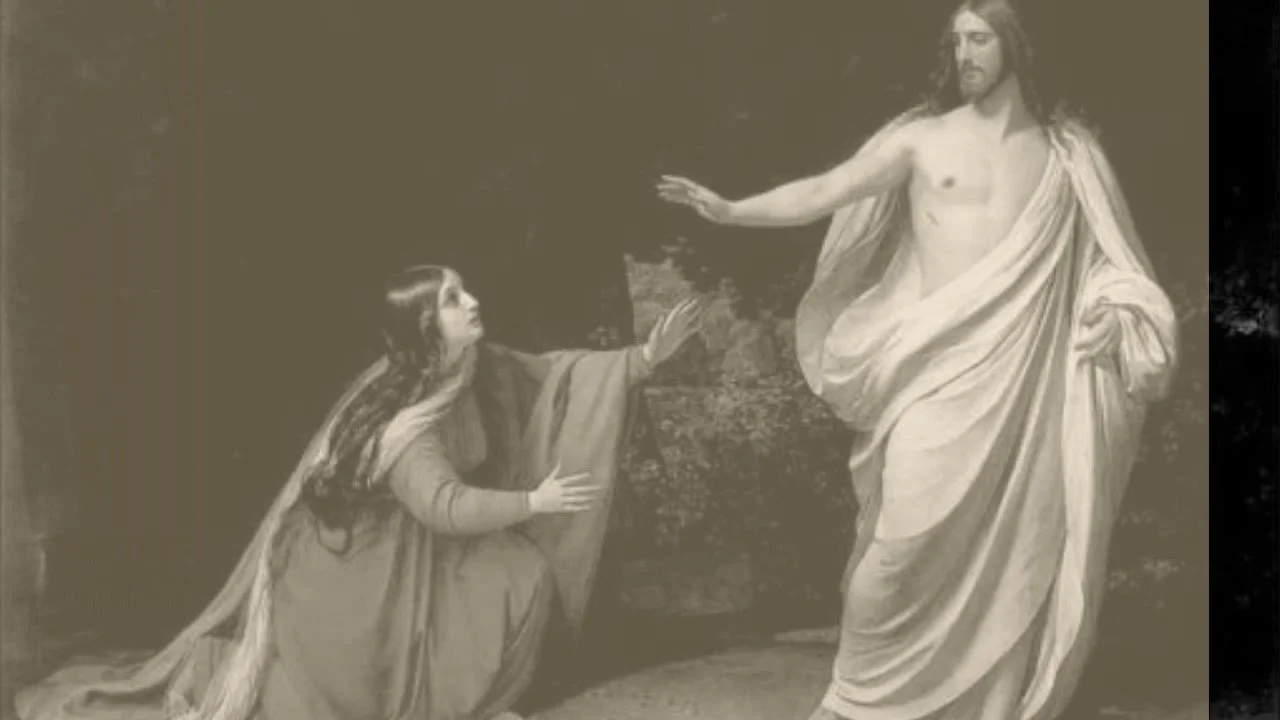Choir Corner: Healy Willan and Missa de Sancta Maria Magdalena
David Williamson, Organist and Choirmaster
By David Williamson
Some of you have noticed that we switched service music, or the Ordinary of the Mass, for Advent. We will continue with it through the Christmas season, including the late service on Christmas Eve, when we substitute the Gloria in Excelsis for the Kyrie. (According to the rubrics, the Gloria is not said or sung in Advent or Lent.). The setting is the glorious 1928 Missa de Sancta Maria Magdalena by Healy Willan 1880-1968.)
Willan was born and educated in England and moved to Canada in 1913. He composed and taught at the Royal Conservatory and earned enough from his composition royalties to leave the more prominent St Paul’s Bloor Street in 1921 for the smaller St. Mary Magdalene, which was High Church. The mass setting was named for the church. A former rector’s wife grew up in that parish, and when her family visited, I asked about his time there. He paid for the music budget by charging his singers!
In his sacred compositions, he was of that generation influenced by both the high church movement and looking back at earlier styles of music from pre-Baroque to plainsong chant.
His limericks were said to be wonderful! He’s famously quoted as saying he was “English by birth, Canadian by adoption, Irish by extraction, and Scotch by absorption.” He was the Dean of Canadian composers and was commissioned to write an anthem for the 1953 Coronation of Queen Elizabeth II. In 1989, Queen Elizabeth the Queen Mother unveiled a plaque in his memory at the church.
We have a few pieces in the choir library and sang his Advent anthem, “ Rejoice O Jerusalem, behold thy King Cometh,” on the first Sunday of Advent. I probably play more hymn-based voluntaries by him than any other composer.
In The Hymnal 1940, this setting was the Second Service and was the most frequently used service music in most congregations. If you’re not as familiar with this setting, there are several YouTube videos of it.
December Choir Corner by David Williamson
As we approach the two shortest seasons of the Liturgical Year, I’m reminded of the old saying that Good Friday belongs to the Roman Catholics, Easter belongs to the Eastern Orthodox Christians, but Advent, Christmas, and all the Holy Days dealing with the Incarnation are the domain of us Anglicans. We are militant in refusing to celebrate Christmas without thoroughly preparing ourselves though Advent. Our hymnody embraces and reinforces the dual preparation for both the celebration of the first coming of Jesus and the proclamation of his return in glory. Among the Advent favorites in our hymnal are “Hark, a thrilling voice is sounding,” “On Jordan’s bank the Baptist’s cry,” “Prepare the way, O Zion,” ”Sleepers Wake,” “Lo! He comes with clouds descending,” and “O come, O come, Emmanuel.”
The Gloria in Excelsis (the song at the beginning of worship that begins, “Glory to God in the Highest...”) is given up for Advent but will return in our worship on Christmas Eve in the metrical form of “Angels we have heard on high.” This is appropriate since the first lines
of the Gloria in Excelsis comes directly from the angels’ mouths as they announce the birth of Jesus to the shepheards.
During Advent, we will once again sing the Schubert’s Kyrie (“Lord, have mercy upon us...”) and Sanctus (“Holy, holy, holy Lord...”) along with Mark Schweitzer’s “St. James’ Christmas Service” setting of the Agnus Dei (“O, Lamb of God that takes away the sin of the world...”) to the tune “Greensleeves.” Greensleeves is the tune most are familiar with as the setting of “What Child is This?”
Christmas Pageant Rehearsals and Performance
Nativity’s annual Christmas pageant is Sunday, December 9 at 5pm. As we approach the big day, all the components of this tradition are rapidly coming together with final rehearsals.
Nativity’s annual Christmas pageant is Sunday, December 9 at 5pm. As we approach the big day, all the components of this tradition are rapidly coming together with final rehearsals. Read on to see which part applies to you and your little ones:
EYC (6th-12th Grade): After our normal 5pm dinner, we will have a dress rehearsal at 5:30pm during our regular youth group time Sunday, December 2. Peter will be present this evening as we put the finishing touches on the program. Sunday, December 9, we will have another run-through at 3pm with an early dinner in between that practice and the performance itself.
Youth Choir (4K-5th Grade): Our young singers are sounding really great, and there are a lot of them this year! They will rehearse with David, Cyndi, and Beverly on December 2nd and 9th following the 10:30 service and lunch. On the evening of the pageant, youth choir should arrive by 4:30pm to get fitted for robes.
Littlest Angels (2-4 years): If your pre-schooler walker is ready to join the heavenly host, you can help them get comfortable with the role by participating in the dress rehearsal at 5:30pm on Sunday, December 2. Parents will help get the kids into costume and then help Julia Harris and Nancy Johnson usher them down the aisle when their cue comes.
Episcopal Church Women: As always, the ladies of Nativity will put on a reception following the performance. If you are bringing cookies or some other snack, please have them to the church by 4:30pm on the 9th.
The Choir Corner: Methodism
Most of you know John Wesley as the founder or Methodism, but we Episcopalians still have one of his hymns in our hymnal.
Most of you know John Wesley as the founder or Methodism, but we Episcopalians still have one of his hymns in our hymnal. His brother Charles was the prolific hymn writer and the person who invited John to the group out of which the Methodist movement was born. Nevertheless, Charles remained staunchly Anglican until the end and was buried in his vestments.
Charles's son Samuel was the most brilliant organist of his day, scandalous, and for a time became Roman Catholic. We still have many of his gorgeous Anglican chants and organ pieces in out hymnal. He's famous for competing with the great Felix Mendelssohn at organ playing. No official result could be rendered because the men that were hand pumping the organs gave out.
Samuel's son, Samuel Sebastian, was the greatest organist and Anglican composer of his time (mid Victorian) and we still sing much of his music. The one likely most familiar to us is "The Church's One Foundation."
Send a message to David Williamson for more information and a listening list.
This is the Egmore Wesley Church in Chennai, India. Choristers are from all leading choirs of Chennai.
Melody: Samuel Sebastian Wesley 1874 [AURELIA]
Text: Samuel John Stone 1866 "The Church's One Foundation"
The Choir Corner: The Great 50 Days of Easter
David Williamson, Choirmaster and Organist
In our 10:30 service, we typically sing the Gloria ("Glory to God in the high-est...") at the beginning of worship, just after the opening sentences. During the Great 50 Days of Easter, however, we are instead singing the Easter Canticle, the Pascha nostrum (which means Our Passover) in place of the Gloria. We are singing a metrical version of the Pascha nostrum by the Rev. Carl Daw, which sets it to the familiar tune "Sine nomine," which you know as the same tune as "For all the saints." Daw's Paschua nostrum first came out as an anthem in the 80's, and I was overjoyed that it became available for congregational use by being included in the popular, authorized supplement to the hymnal, "Wonder, Love, and Praise" from which the choir often sings.



